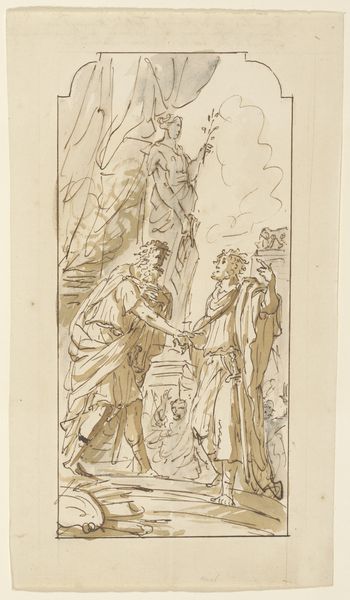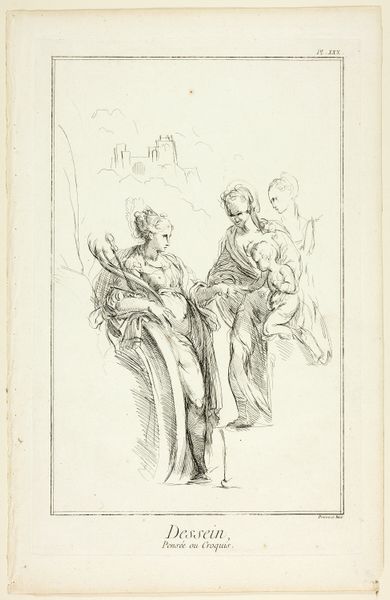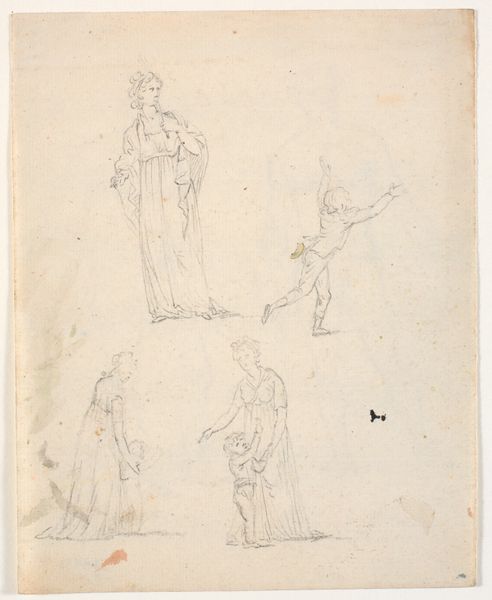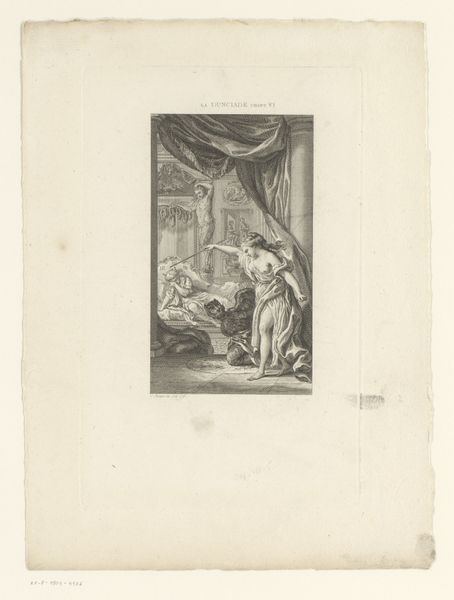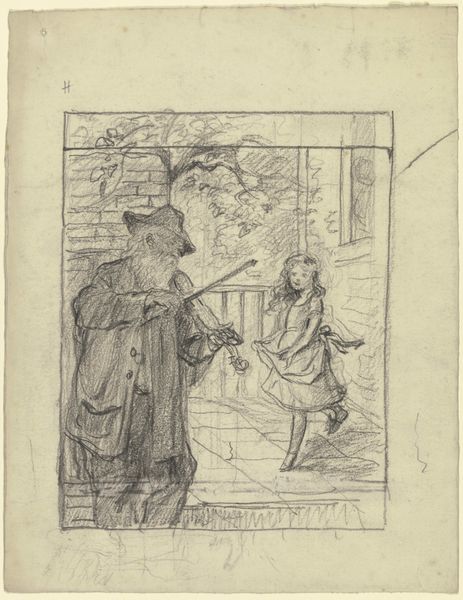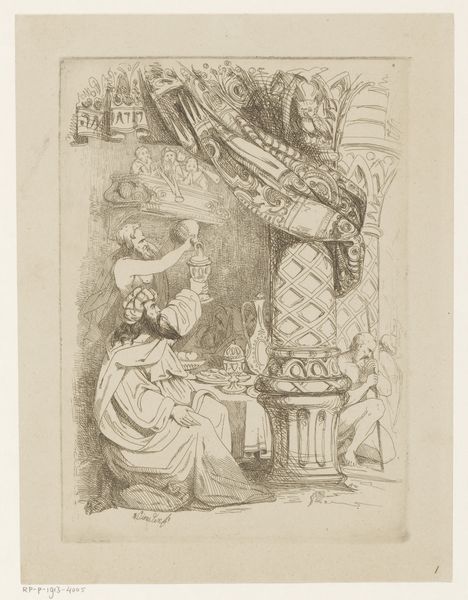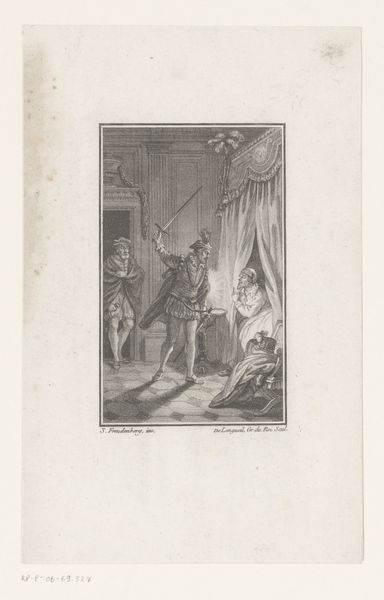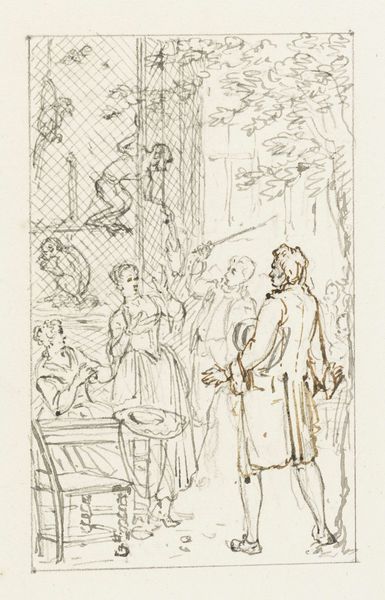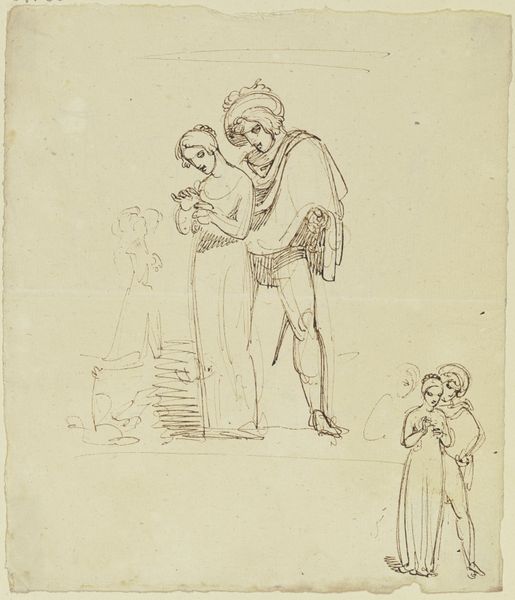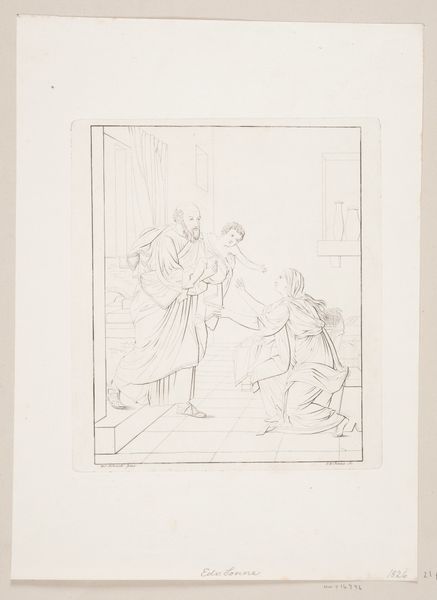
drawing, pencil
#
drawing
#
light pencil work
#
quirky sketch
#
narrative-art
#
pen sketch
#
figuration
#
personal sketchbook
#
sketchwork
#
ink drawing experimentation
#
pen-ink sketch
#
pencil
#
sketchbook drawing
#
storyboard and sketchbook work
#
sketchbook art
Dimensions: 135 mm (height) x 104 mm (width) (bladmaal)
Curator: Look at this captivating sketch by Lorenz Frølich, created around 1866. It's an illustration draft for Hans Christian Andersen's "Something". What strikes you about it? Editor: A first impression? It feels… unfinished, ghostly. The pencil lines are so delicate, barely there. It reminds me of a faded memory, or a story whispered in a dream. Curator: Precisely! It's more suggestion than statement. Note how Frølich uses the sketch format to his advantage. In the top register we have two figures interacting in a domestic scene and in the bottom we see what appears to be other figures in supine states, shrouded, as though deceased. He uses a soft pencil, achieving incredible luminosity, considering its preliminary function. Editor: It almost feels like we're peering into Andersen's creative process through Frølich’s eyes. The woman gesticulating, the robed figure holding something... Perhaps this captures an attempt at alchemy or a dark trade. It's interesting how he hints at the symbols – the cloak, the gestures – rather than defining them outright. Do you think these might recall figures from other Andersen tales? Curator: Oh, without a doubt. These recurring visual motifs create a cultural continuity, not only within Andersen's own work but in the wider storytelling traditions of the time. That standing man with a quill—perhaps a scholar, wizard, maybe even Death itself. These archetype speak volumes. And that is one of the appeals of Frølich’s method as a means for him to explore figuration and themes common across illustrative artwork. Editor: And the way they are all floating, somewhat detached... it creates a feeling of unease. It speaks to a fear and longing within, something deeply personal, you know? These sketches, while specific to Andersen’s text, transcend it somehow, expressing universal human anxieties. This almost looks to me like the type of image a contemporary psychoanalyst might select as an illustration in his office. Curator: You're absolutely right! And perhaps that’s the drawing’s charm. A fleeting idea, masterfully captured with just a few strokes, opens up entire worlds of symbolic resonance and psychological depth. A preliminary drawing with potent immediacy. Editor: A quiet artwork which allows the viewer to contemplate. An uncanny and lasting tale through ephemeral strokes.
Comments
No comments
Be the first to comment and join the conversation on the ultimate creative platform.
